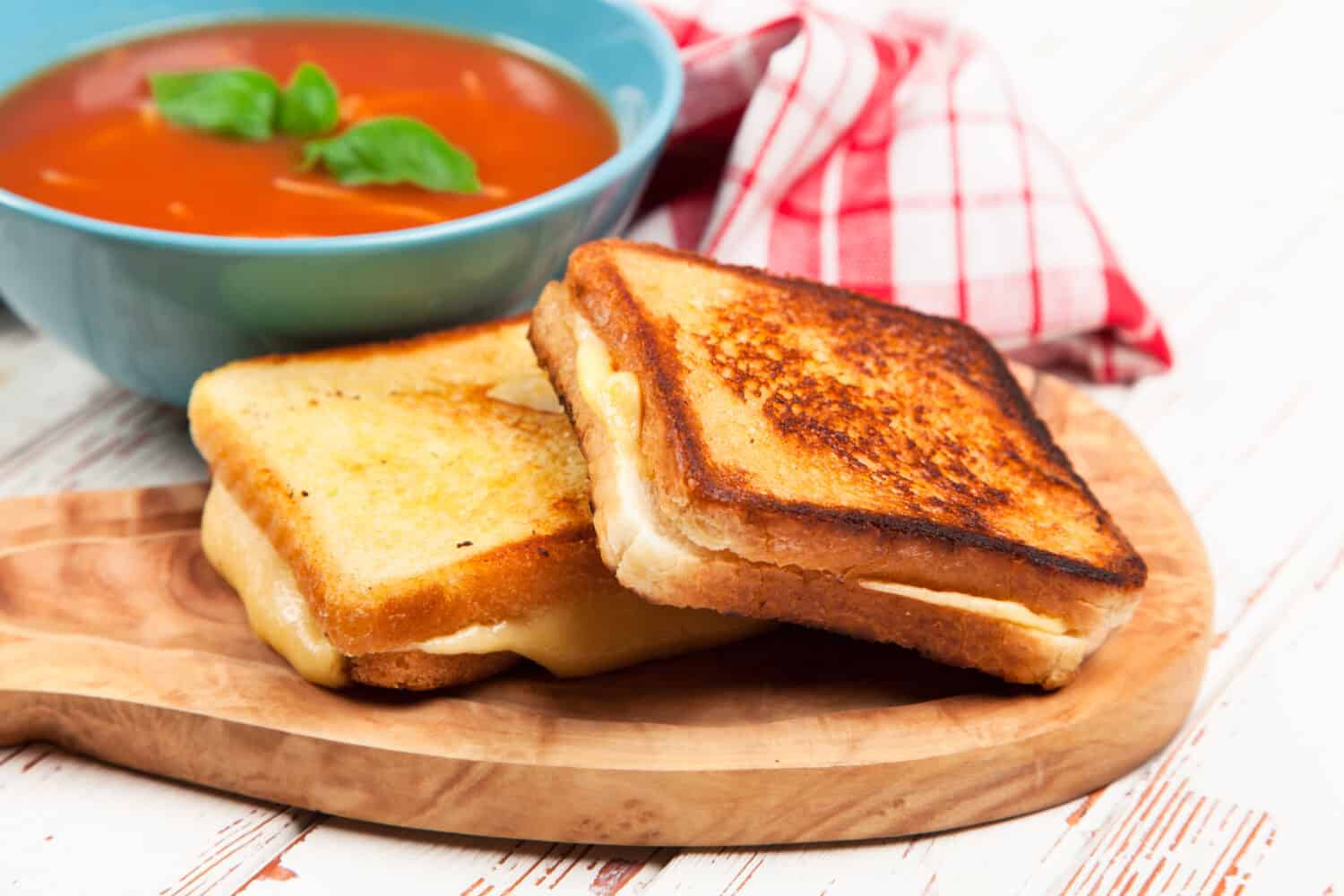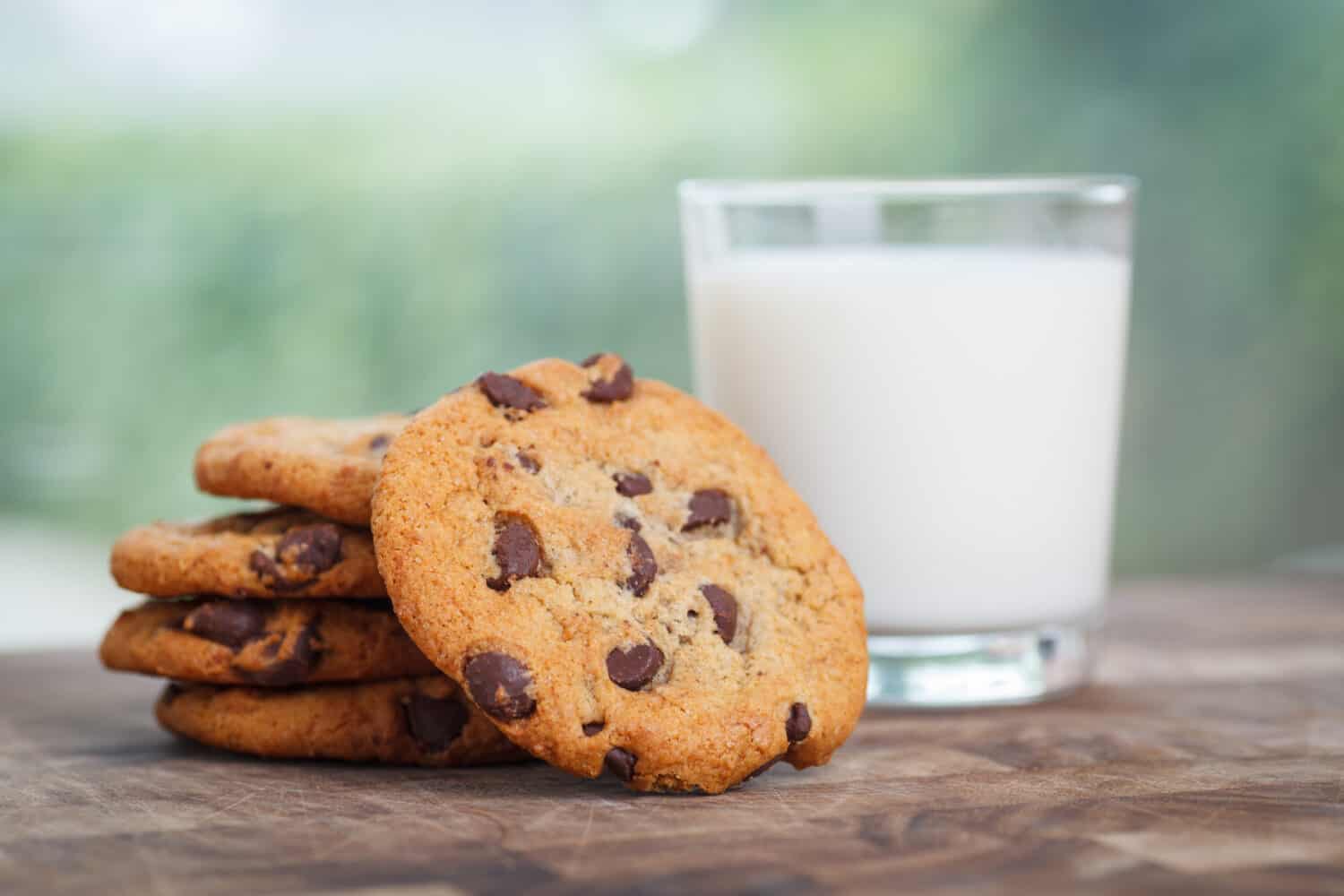Some things just go together. Somebody mentions one and you immediately think of the other. Hugs and kisses, thunder and lightning, needle and thread, odds and ends…. It’s the same with people. You hear Batman, and Robin springs to mind; Bonnie summons up Clyde; Antony is incomplete without Cleopatra.
Not surprisingly, in the world of food, there are countless iconic combinations, too. Over the years, and sometimes over the centuries, people have figured out that certain flavors and textures complement each other, to the point that they become almost inextricably linked.
Can you imagine macaroni without cheese? Chips without salsa? Burgers without fries? (No worries about that happening at one of the best burger joints in every state.)
To develop a list of classic food combinations almost everybody loves, 24/7 Tempo consulted sites including Atlas Obscura, Britannica, and Food Timeline, as well as several books on American food.
Some of the combinations we chose are truly iconic — ham and eggs, cheese and crackers, bread and butter. Two are specifically British and one is Irish or Irish-American, but they’re also combinations well-known and appreciated on our own shores.
Three are linkings of a food with a beverage — coffee and doughnuts, cookies and milk, and that sports-bar and tailgate essential, pizza and beer. (Check out America’s 15 greatest regional pizza styles.)
Several of the entries here are mostly regional, or began that way. Others have been almost universal, at least in this country, since they were first devised. If they tend to be primarily things that are found at diners and other casual eating places, or at home, that’s because these places are our main repositories of culinary tradition.
It should go without saying that this list is not exhaustive. We could have included hot chocolate and marshmallows, peaches and cream, tea and crumpets, caviar and blinis, tomatoes and basil…. The list could go on and on. But these 25 are a good start.
Ham and eggs
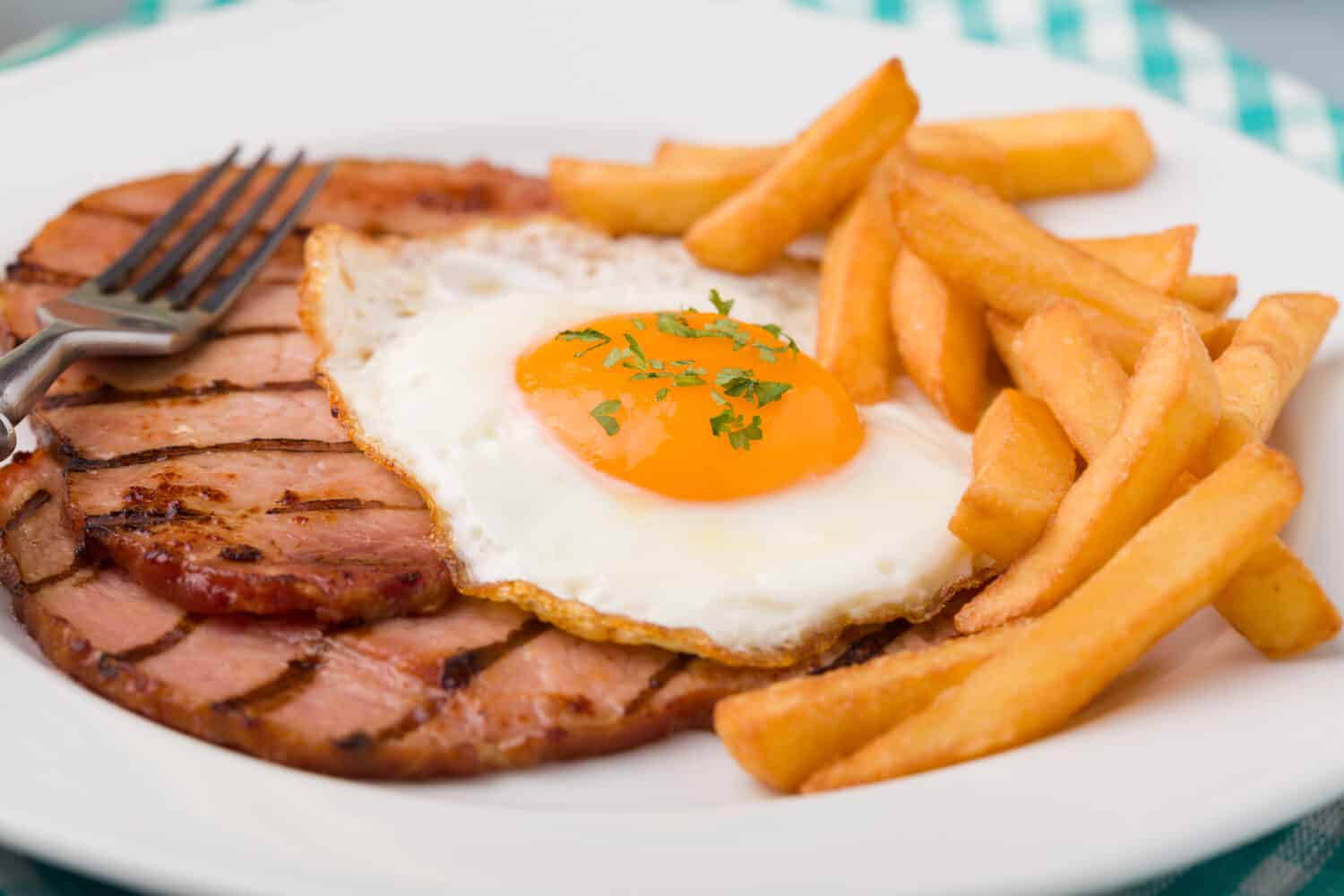
Ham and eggs.
Back in the days before low-far blueberry yogurt and avocado toast, the combination of ham and eggs was considered a classic American breakfast dish — and in some corners of the country, a good lunch or dinner, as well. “Ham and eggs” is also a slang term with several meanings. Two things that are inseparable are sometimes said to “go together like ham and eggs” — and a “ham-and-egger” is an old baseball term for a double play.
Pancakes and bacon
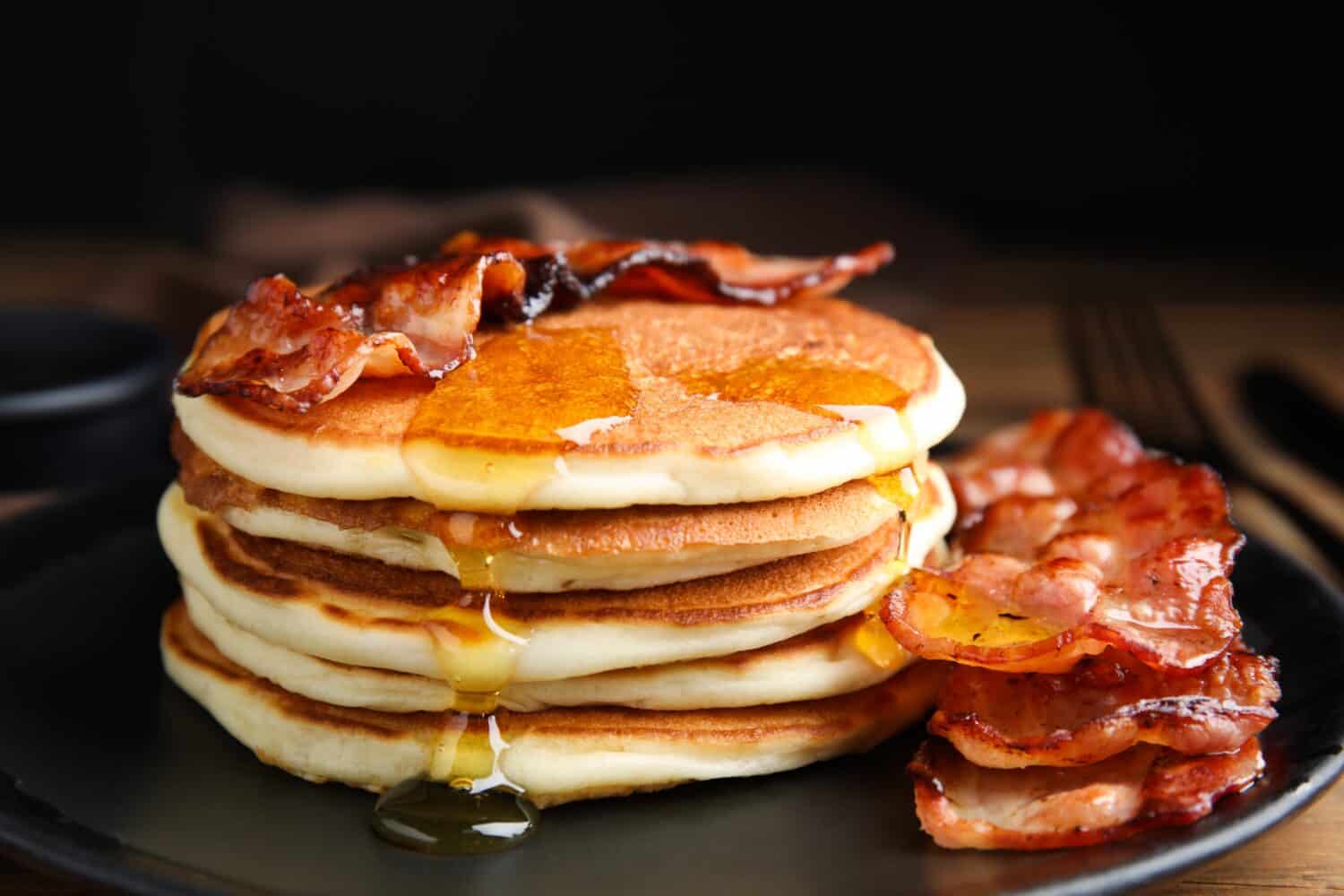
Pancakes and bacon.
This is another classic American breakfast dish. Interestingly, while some people eat bacon and eggs instead of ham and eggs, almost nobody eats pancakes and ham. Sausage, on the other hand, does sometimes go with pancakes, though is rarely seen with eggs.
Chicken and waffles
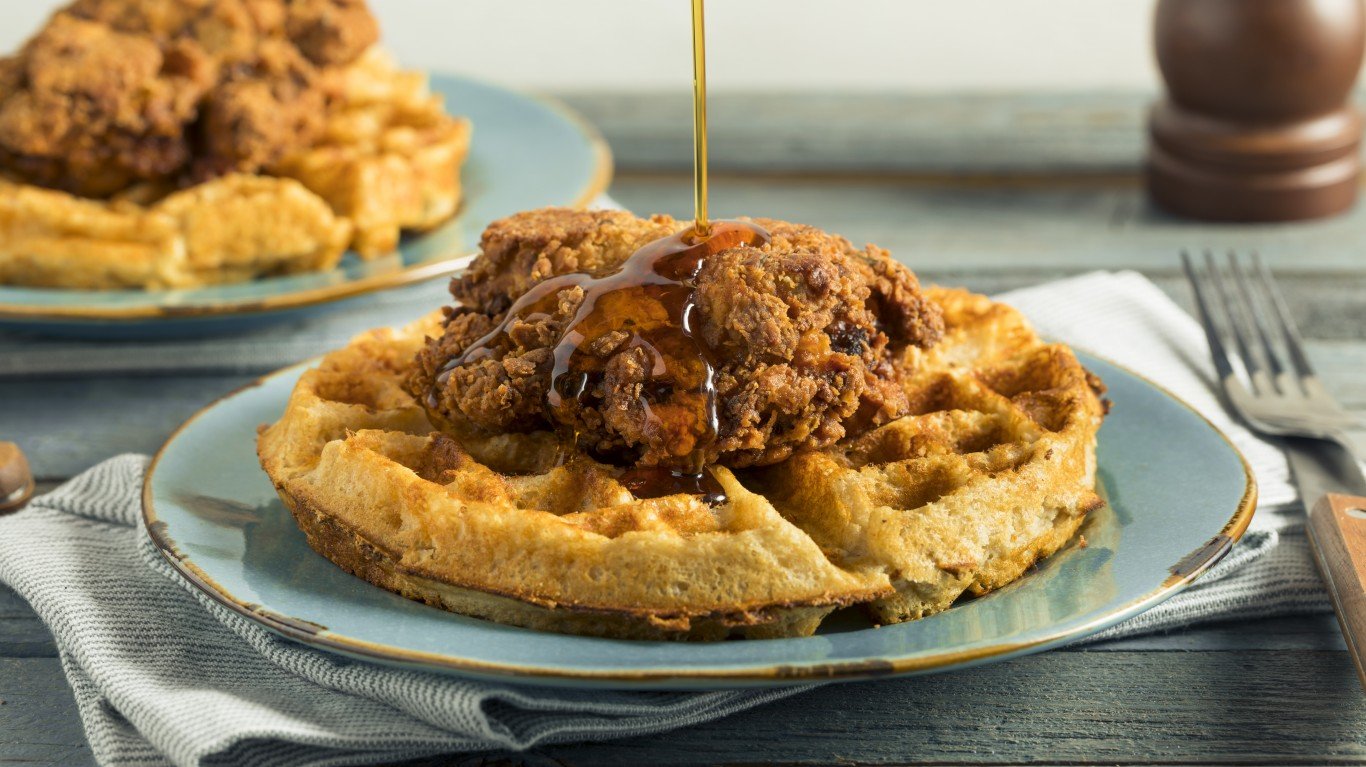
Chicken and waffles.
Though this unusual-sounding but delicious combination is associated today with Southern cooking and “soul food,” it apparently had its origins with the Pennsylvania Dutch, as early as the 17th century. It found a place on urban menus around the country in the 1930s, and its popularity spread in the 1970s, after a place called Roscoe’s Chicken and Waffles opened in Hollywood, and helped spread the word far and wide.
Coffee and doughnuts

A doughnut with coffee.
This well-known combination is said to have developed in the 1940s. According to one theory, when police officers developed their well-known, if clichéd, affection for doughnuts, purveyors of the treat would offer them a cup of coffee for free. The now-ubiquitous Dunkin’ (formerly Dunkin’ Donuts) chain built its reputation around the combination.
Bagels with cream cheese
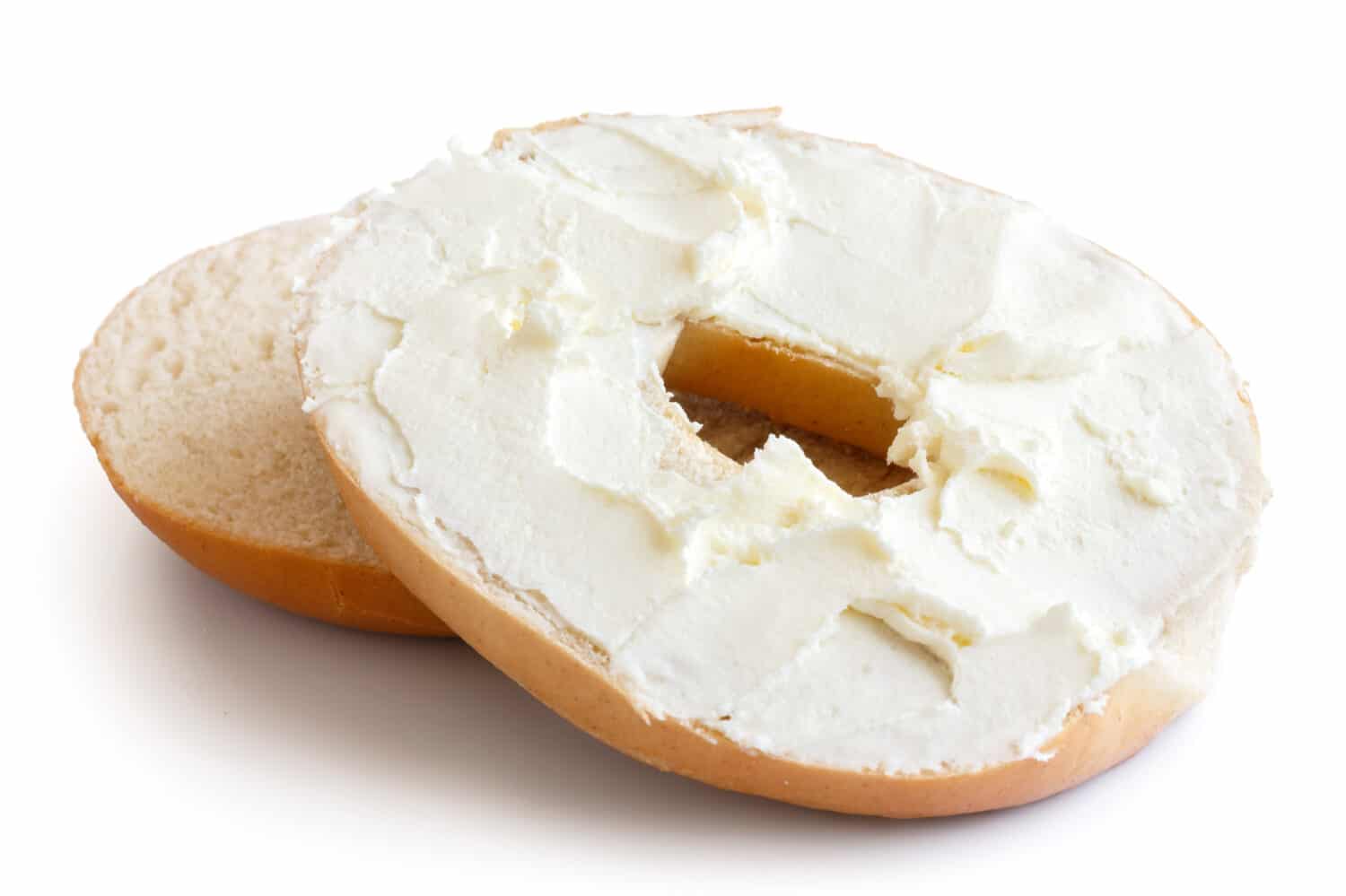
A bagel with cream cheese.
Associated originally with New York City and with Jewish delis, this combination, in its purest form, is simply a halved bagel — warm but not toasted, according to purists — with a “schmear” of cream cheese. It’s often additionally topped with lox, and these days there are numerous variations on the schmear — veggie, herbs and garlic, sun-dried tomato, etc.
Peanut butter and jelly

Peanut butter and jelly.
Known to and loved by probably every schoolchild in America (barring those with peanut allergies), the peanut butter and jelly sandwich was first mentioned in print in a culinary magazine in 1901. When marshmallow fluff is added to the mix, the sandwich becomes a Fluffernutter. Variations include the substitution of some other nut butter for peanut butter and the replacing of jelly with honey or sliced bananas.
Burger and fries
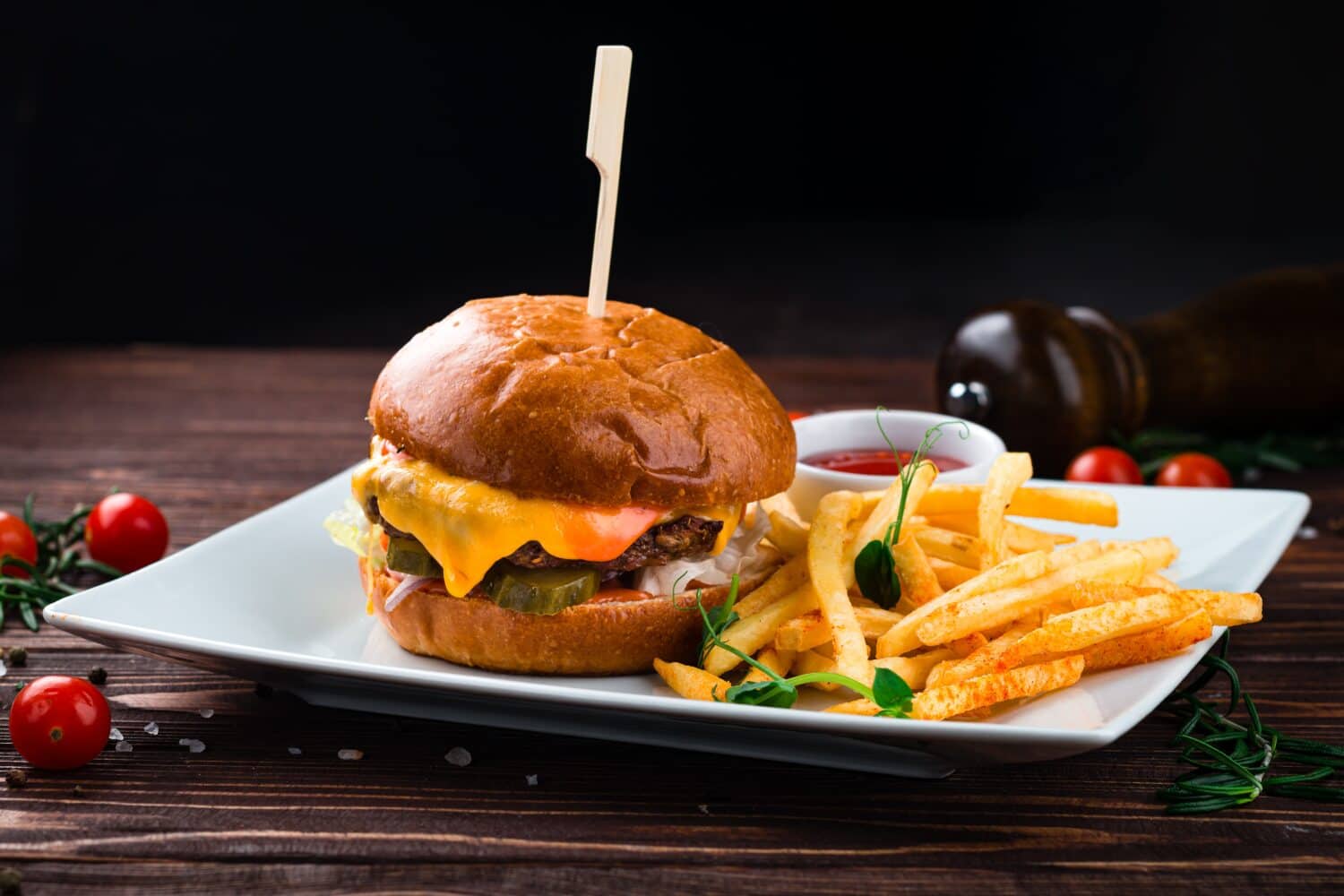
A loaded cheeseburger with fries.
From vintage diners to fast-food outlets and even these days to more serious restaurants, the combination of a hamburger with French fries is practically a definition of American cuisine. The prolific Georgia-born food writer John T. Edge has even written a book called “Hamburger & Fries: An American Story.”
Grilled cheese and tomato soup
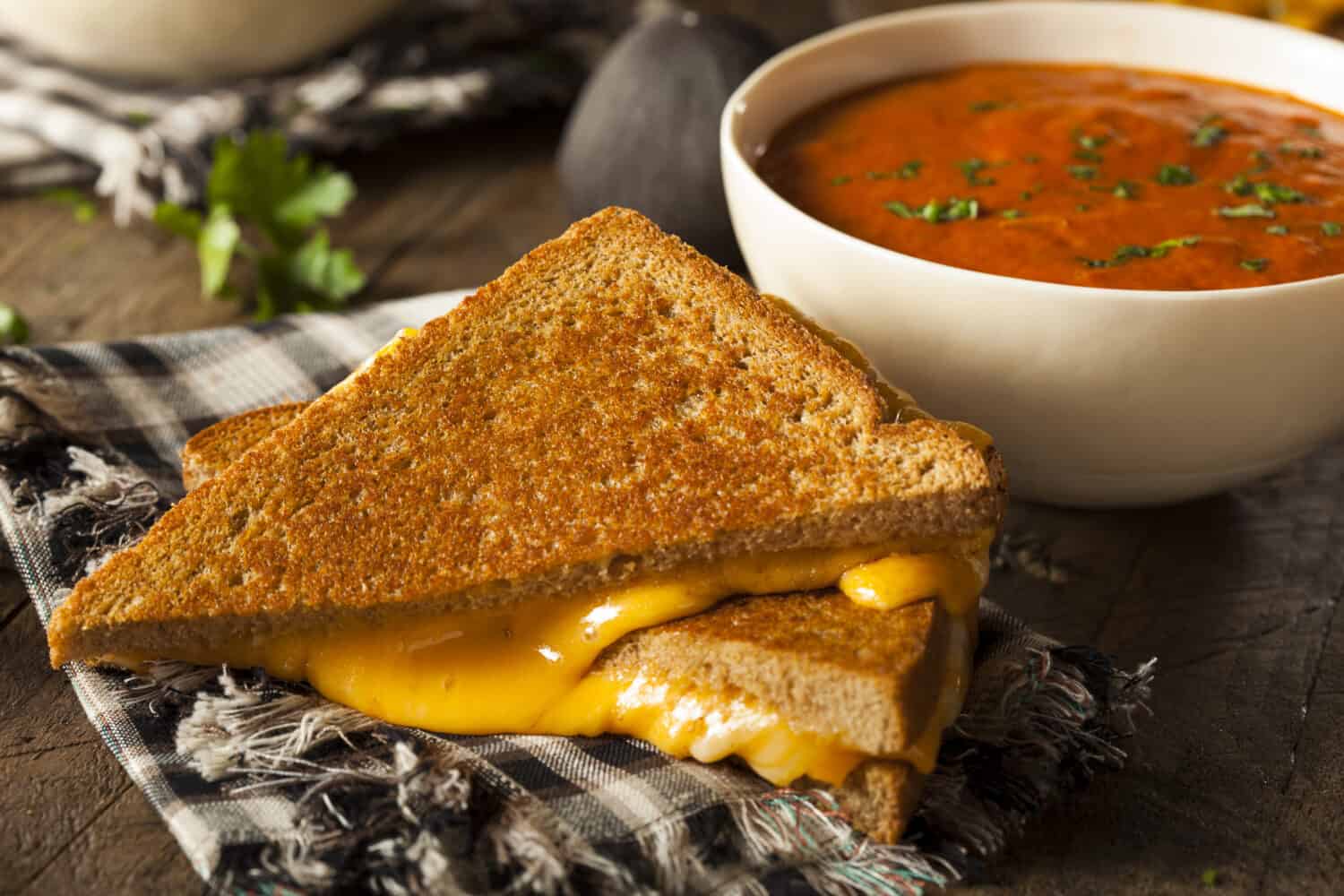
Grilled cheese and tomato soup.
Cheese melted on bread has been common in various cultures for many generations, and but the classic American grilled cheese sandwich probably dates from the 1920s, when both commercially available sliced bread and individual slices of American cheese were invented. The idea of matching the sandwich with tomato soup may have come about in military mess halls during World War II, or shortly afterwards in school cafeterias.
Macaroni and cheese
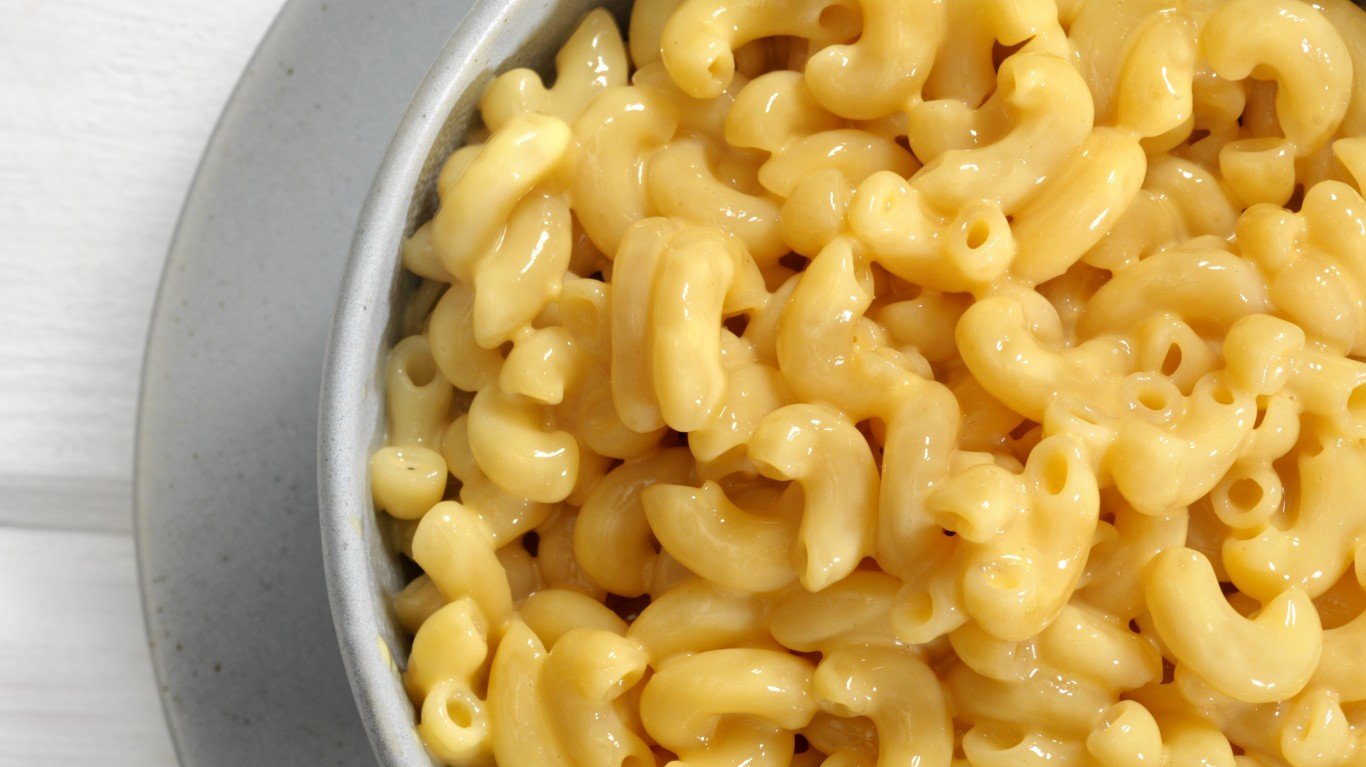
Macaroni and cheese.
The earliest recipe for a casserole of noodles and cheese appeared in 14th-century cookbooks in Italy and England. Recipe collections from the 18th and 19th centuries in Europe are full of variations — and the dish was apparently first brought to this country from France in the 1790s by James Hemmings, Thomas Jefferson’s enslaved French-trained chef. Today it is often considered the ultimate American comfort food, whether a fancy variation at a restaurant or the familiar Kraft boxed version at home.
Cheese and crackers

Cheese and crackers.
Because both crackers and certain types of cheese have long shelf lives, the combination has been popularfor centuries among sailors and explorers, who could pack the ingredients to take along without worrying about spoilage. The combination had become a common snack food in America by the 1850s, and remains a staple of party trays and wine-tasting snack boards to this day.
Chips and salsa
We eat many variations on chips and dip in this country, but one of the most popular is the mating of fried or baked tortilla chips (called totopos in Mexico) with some kind of salsa, mild or spicy. At least since the 1970s, chips and salsa have appeared on Mexican and Tex-Mex restaurants around the country almost automatically when diners sit down. A popular (though pricier) variation is chips and guacamole.
Shrimp and grits
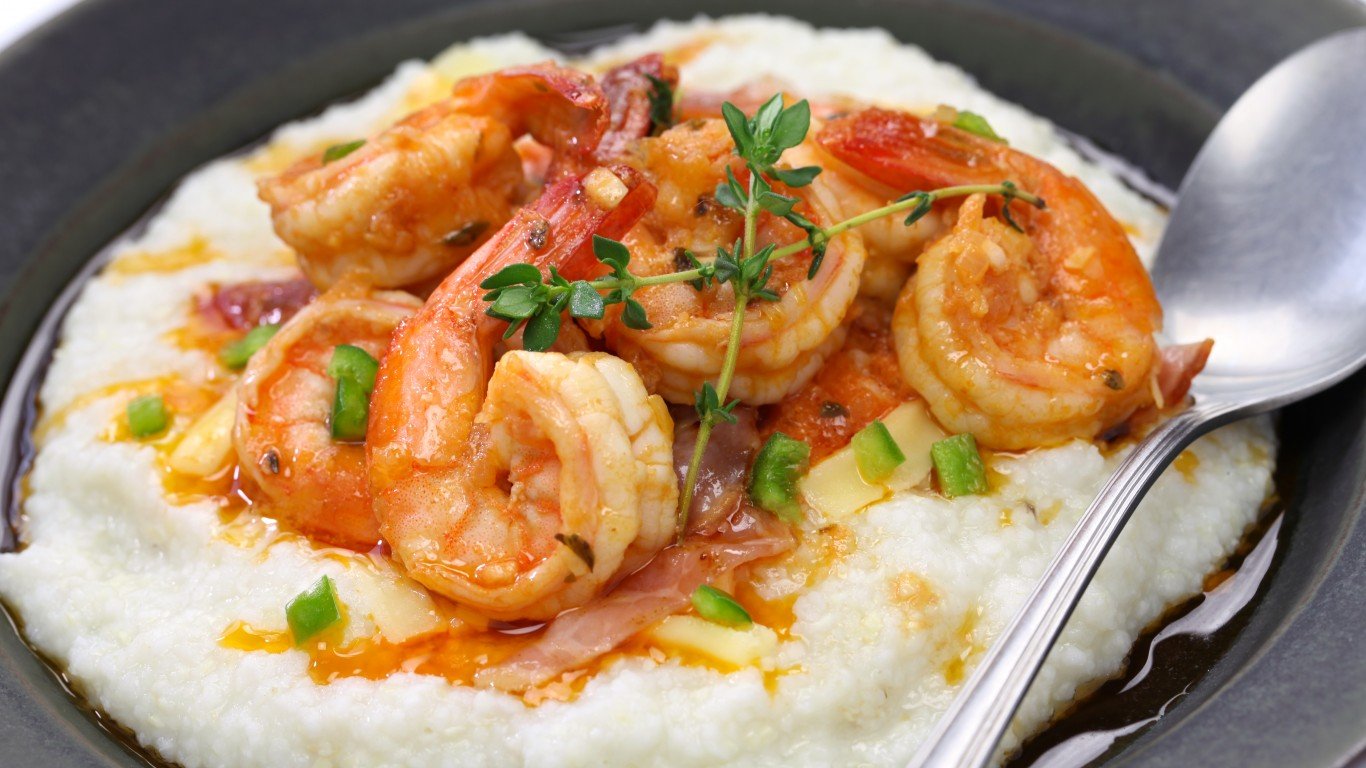
Shrimp and grits.
Originally a specialty of coastal Georgia and the Carolinas, and little-known outside that region, shrimp and grits is now found all over the South and beyond. Originally a breakfast dish, it can now appear at any meal. It’s simply grits (a kind of porridge made with ground hominy) topped with shrimp in what is usually a tomato-based sauce. Bacon or sausage is sometimes added. There are so many variations, in fact, that food writer Nathalie Dupree wrote a whole book about the specialty, offering 80 different recipes.
Steak and potatoes

Steak with mashed potatoes.
In a sort of upscale variation on burgers and fries, steak — on American tables, at any rate — is almost always served alongside potatoes of some kind. Steakhouse menus, in fact, typically list at least six or eight potato preparations. There’s even a form of potatoes called “steak fries,” thicker and meatier than ordinary ones.
Pasta and parmigiano
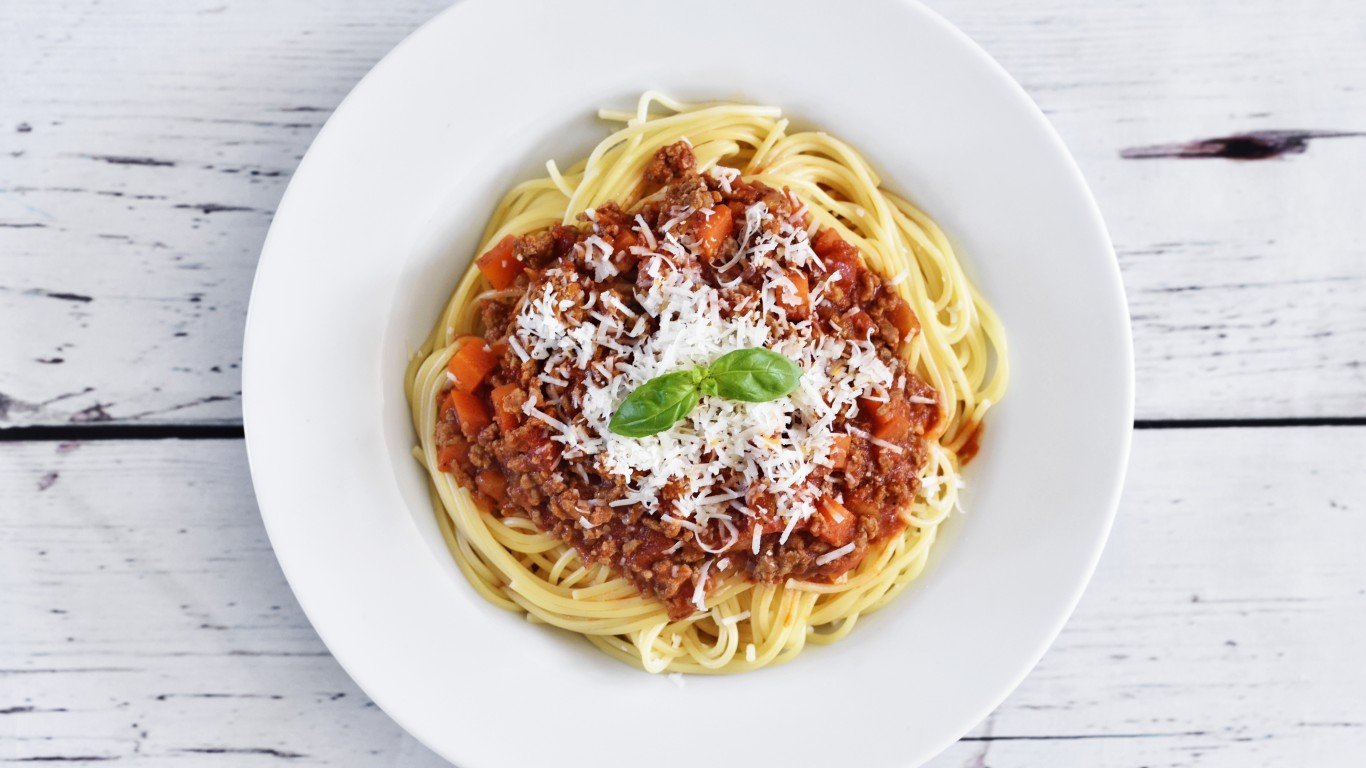
Pasta with parmigiano.
Casseroles of cooked noodles and cheese mix the two together and bake the results. But pasta that’s boiled and then graced with some variety or sauce or other almost always calls for the addition of ground or shredded cheese — usually parmesan, preferably parmigiano reggiano — at the table. One exception, in Italy at least: Cheese is never added to pasta made with seafood.
Bangers and mash
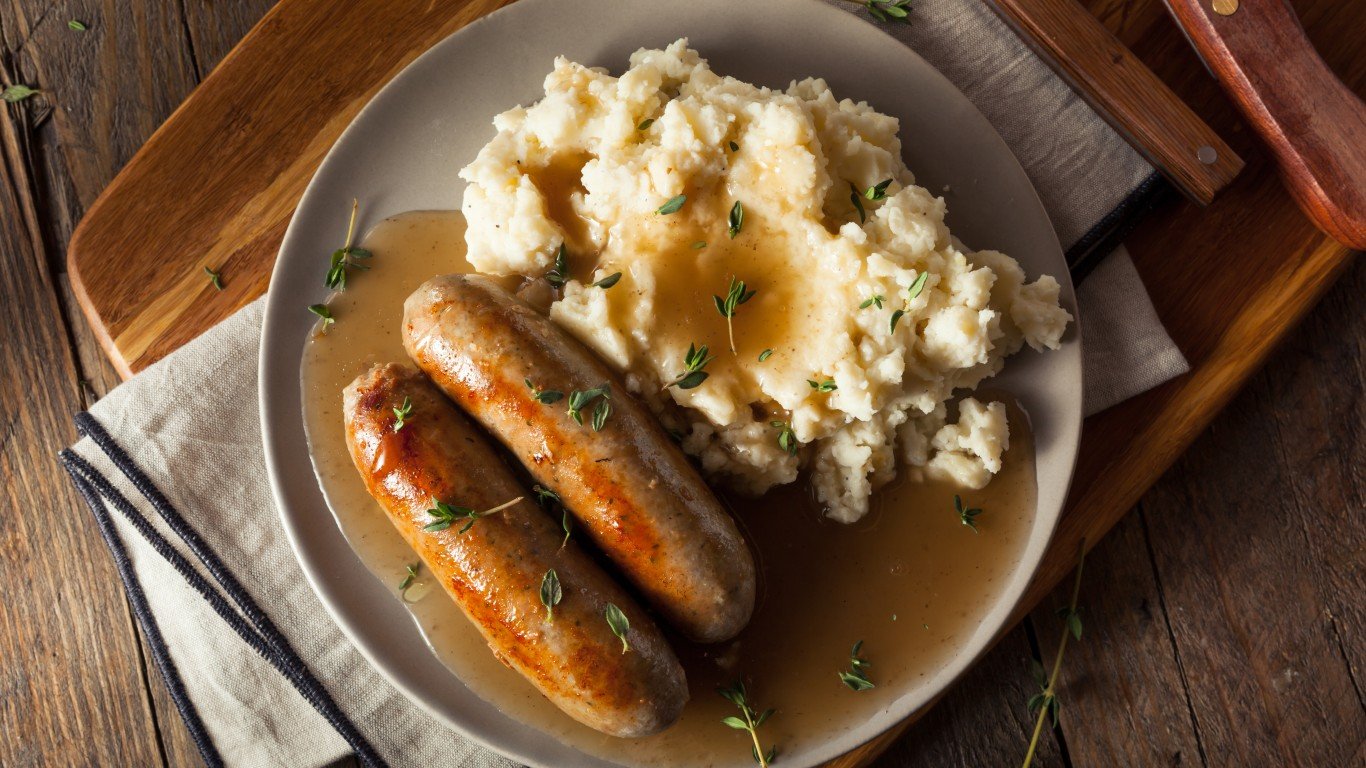
Bangers and mash.
A quintessential British pub dish, and yet another variation on the meat-and-potatoes theme, bangers and mash consists of mild sausages (usually pork, though veal and beef are also used), fried to a brown finish, alongside mashed potatoes with some sort of gravy. The term “bangers” dates back to World War I, when meat shortages meant sausages were produced with a high water content. When these were fried, they popped or “banged” as the moisture hit the hot pan.
Fish and chips
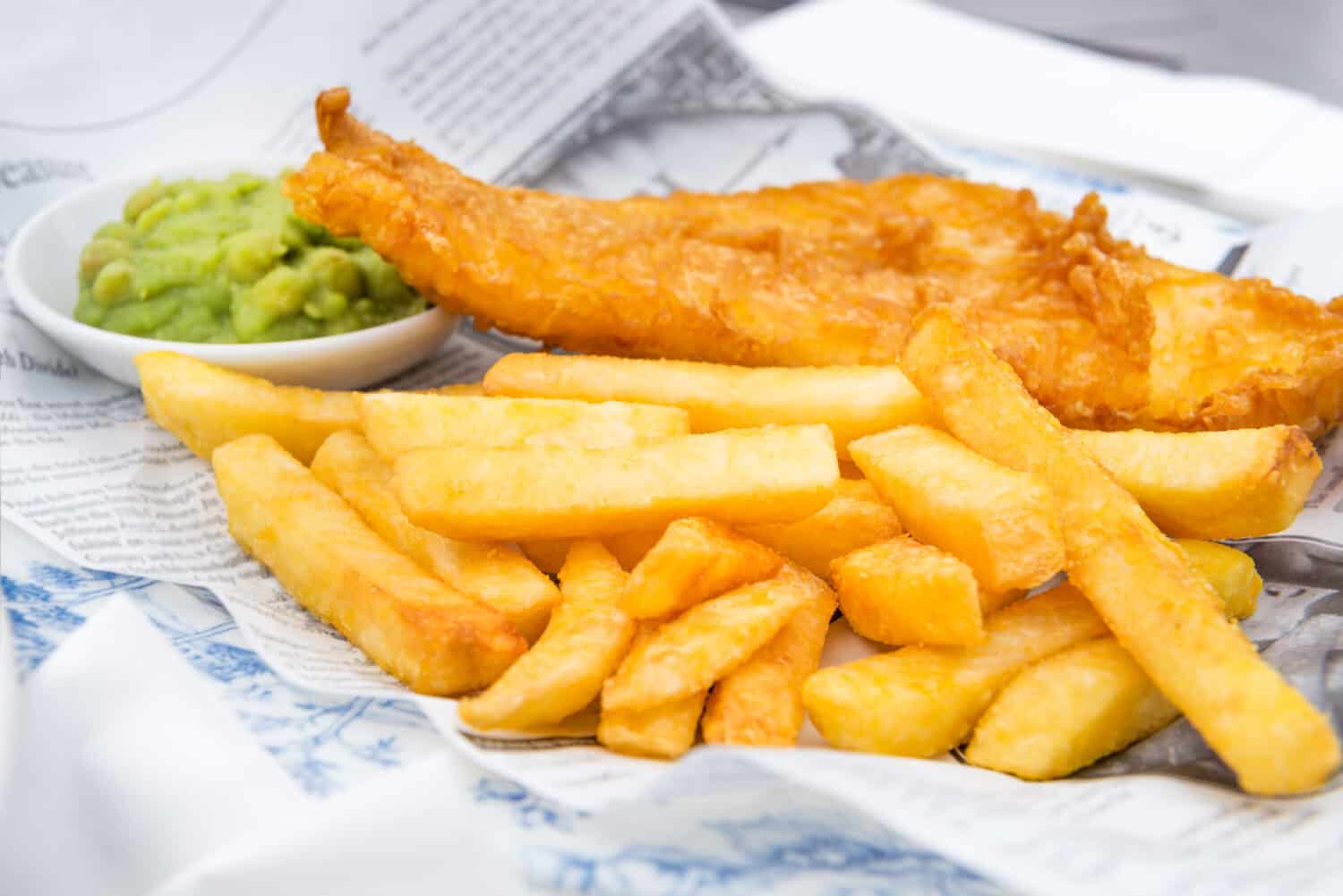
Fish and chips.
Arguably the best-known of all traditional British dishes, fish and chips actually owes part of its lineage to Portuguese and Spanish Jewish immigrants, who brought the technique of frying fish in batter to their new home as early as the 1500s. The use of the term “chips” to describe thick-cut fried potatoes dates from the mid 19th century, when the first fish and chips shops opened in England. Today, a weekly or even more frequent visit to a “chippy” is a part of life in the U.K., as well a in Ireland, Australia, and New Zealand.
Corned beef and cabbage
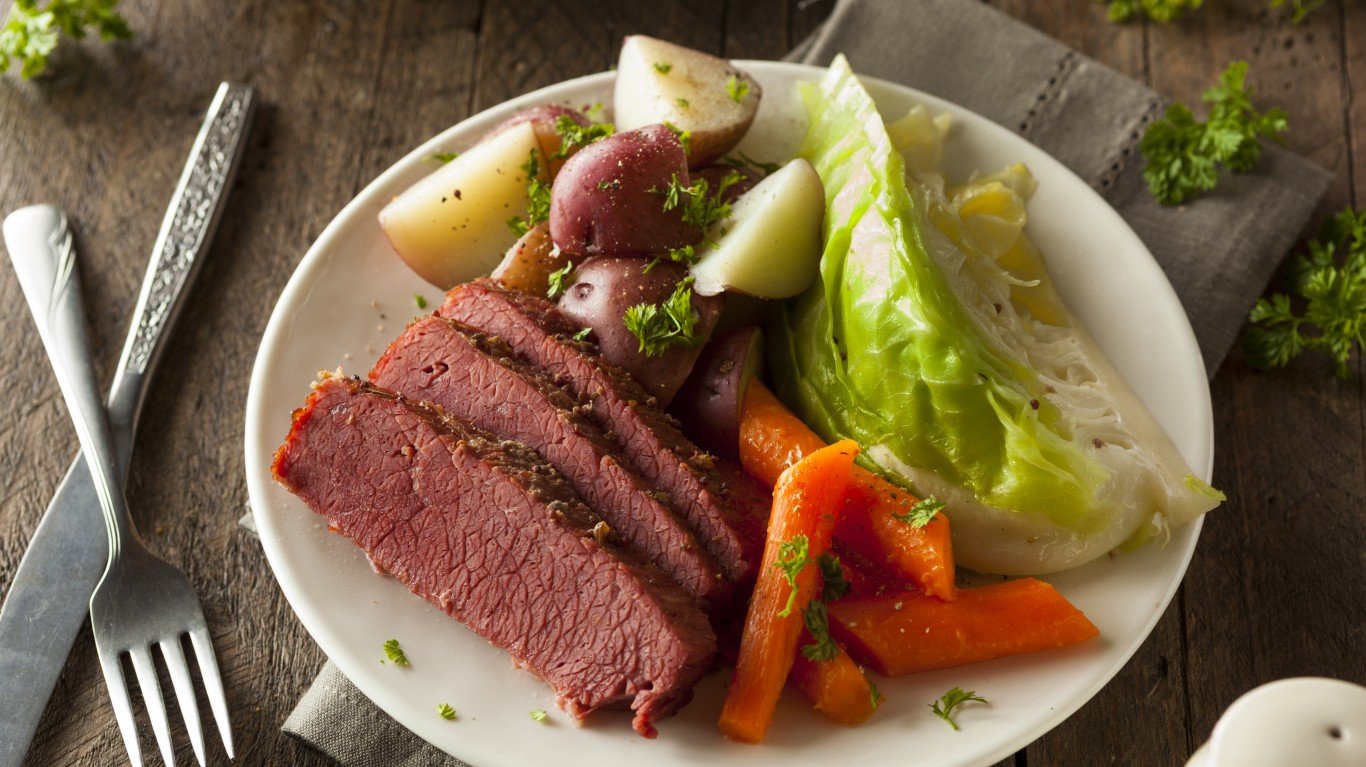
Corned beef and cabbage.
One of the most popular of all Irish dishes is bacon and cabbage — “bacon” in this sense referring to smoked pork loin. The story is that when Irish immigrants came to America, they couldn’t find smoked pork loin, so substituted corned (salt-cured) beef. This is unlikely, considering the preponderance of pork-friendly German and Polish butchers in the cities where the Irish settled, and indeed salt-cured beef with cabbage is an old favorite in parts of Ireland. That aside, it is today undeniably a staple of Irish-American cooking.
Baked potatoes and sour cream
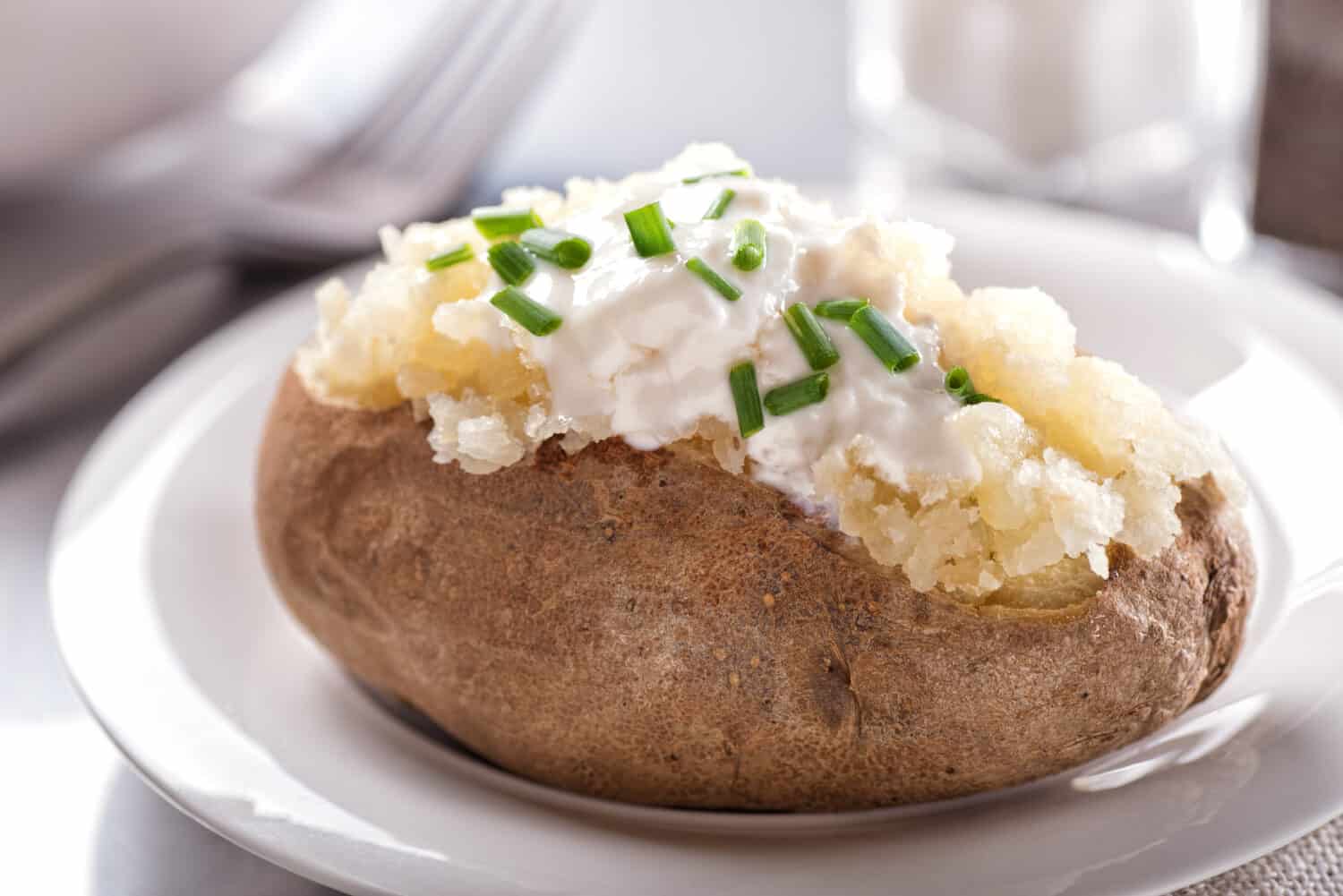
Baked potato with sour cream and chives.
Baking a whole potato and splitting it open is a technique that probably originated in Peru — which is where potatoes came from in the first place. Some diners like their baked potato garnished with nothing more than butter, but a more iconic presentation involves scooping sour cream into the potato, sometimes topping it with chopped chives or crumbled bacon.
Rice and beans
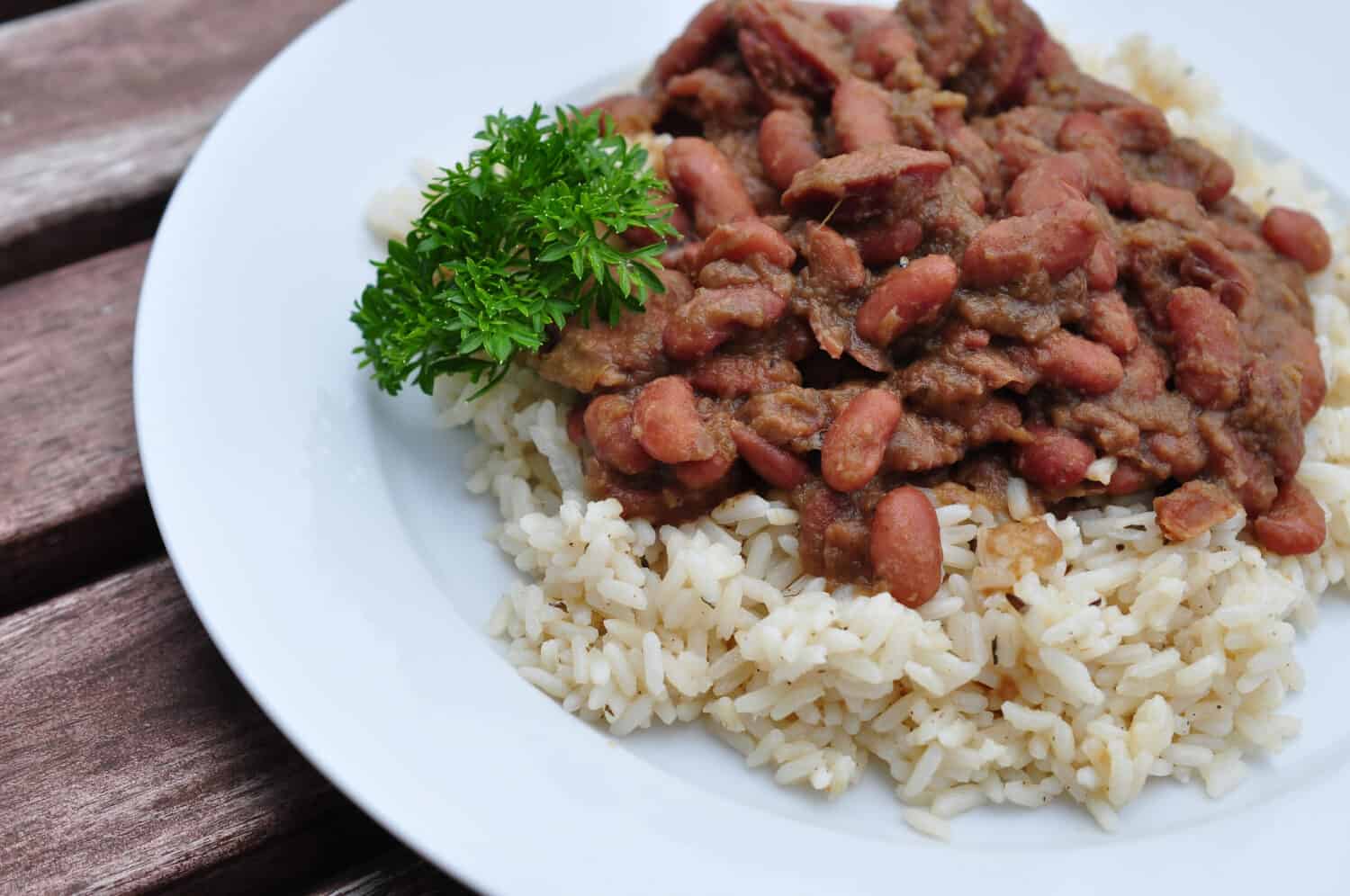
Red beans and rice.
Many cuisines around the world favor this particular combination — two readily available, inexpensive foods that complement each other in texture and nutritional value. Among the best-known examples, using beans or related legumes, are the Creole specialty of red beans and rice, the Lowcountry specialty Hoppin’ John (made with black-eyed peas), Cuba’s moros y crisitanos (using black beans), and the pan-Caribbean rice and peas (meaning bean-like field peas)
Pizza and beer
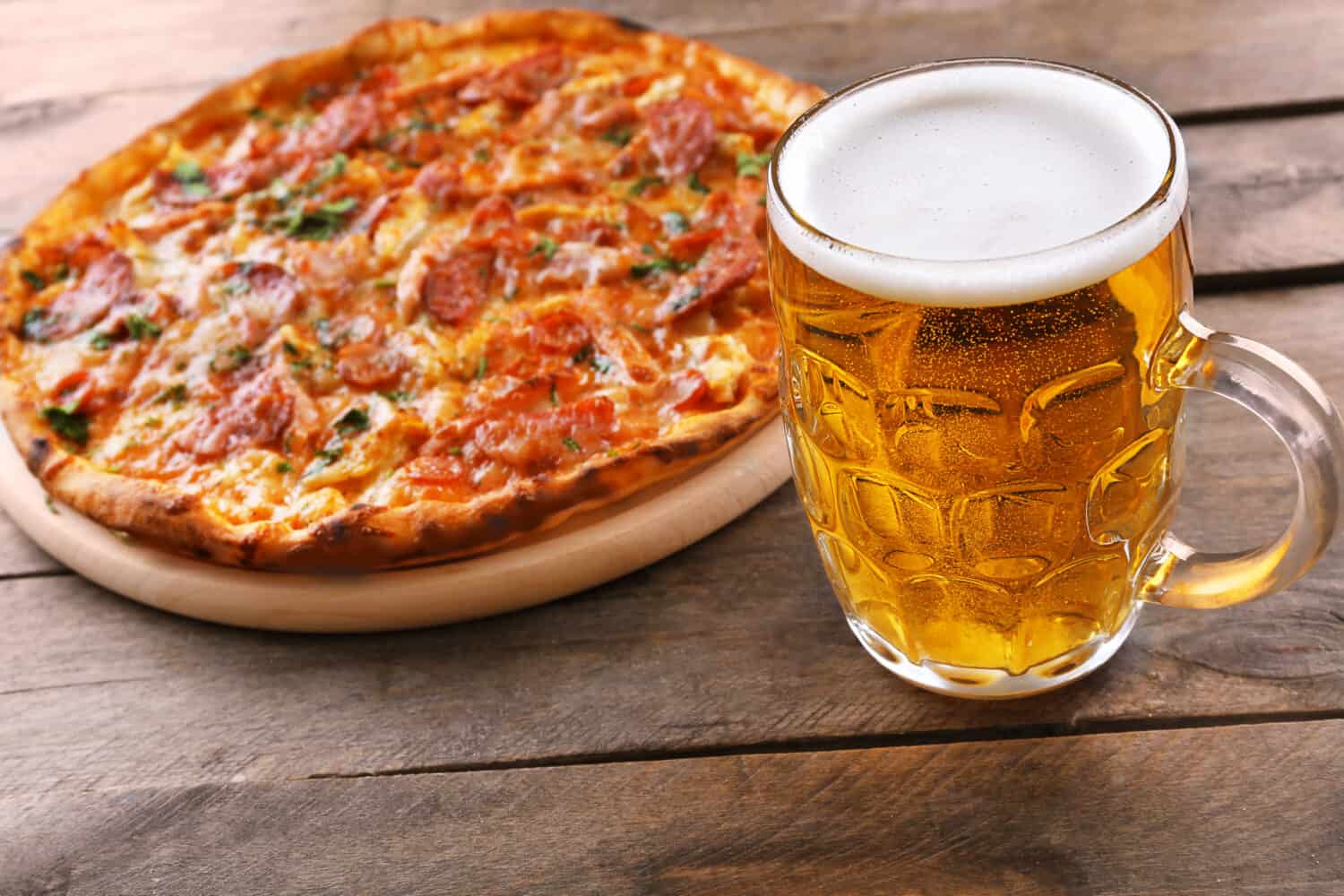
Pizza and beer.
Besides the fact that most pizzerias sell a lot of beer, and that pizza is a common bar snack at places that serve beer, beer and pizza go well together because the malty flavor of the brew seems to bring out the sweetness of the cheese and/or pork products on the pie and because beer’s acidity cuts through the richness of the toppings nicely.
Caramel and sea salt
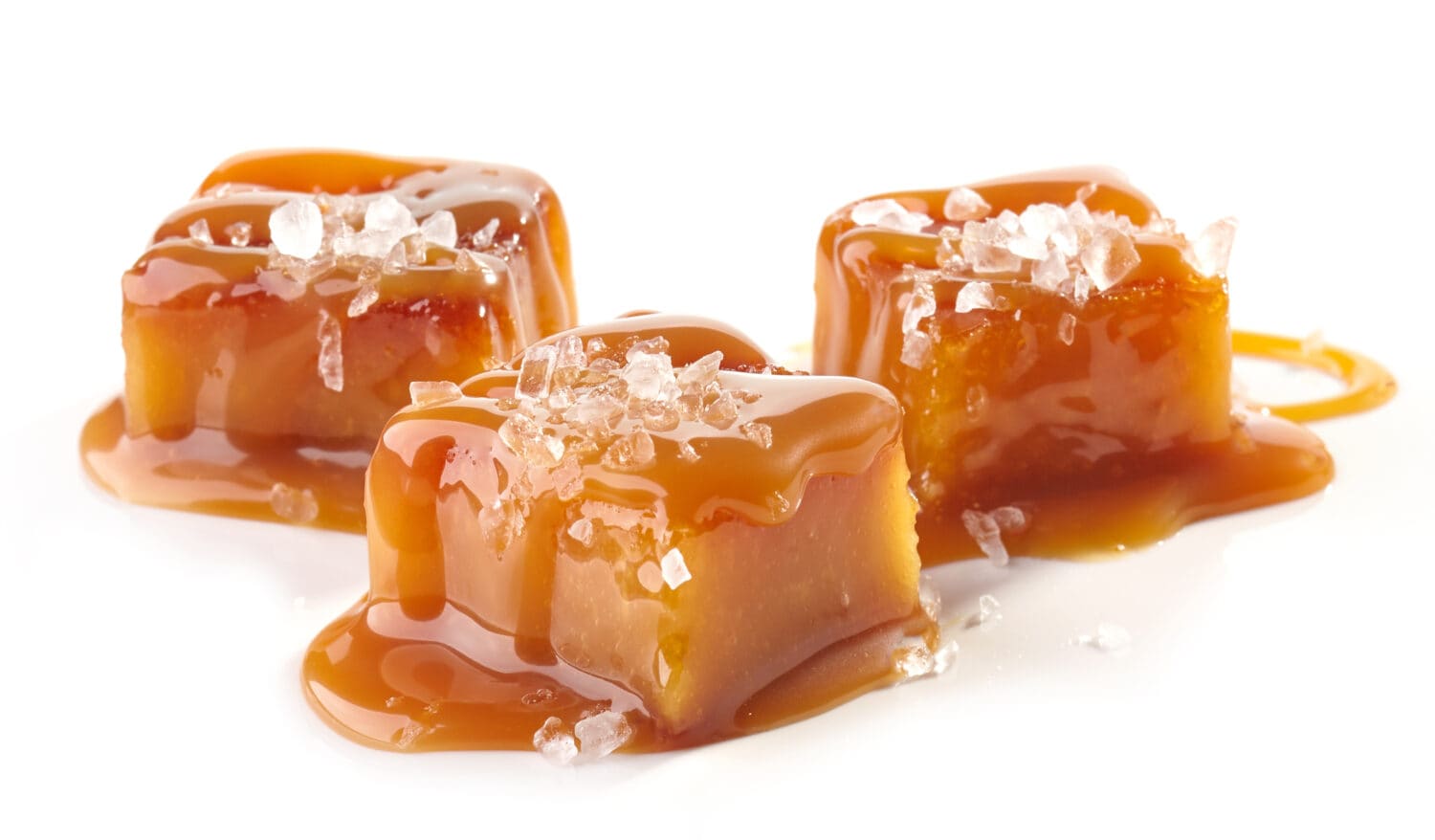
Homemade caramels with coarse sea salt.
Caramel — sugar heated until it liquifies and browns — is delicious on its own, but in recent years, it has been linked with sea salt in number of foods, including candy bars, syrups, cookies, ice cream, and just plain caramels themselves. Two of the two basic taste sensations we are able to detect and enjoy are salt and sweet, and joining them together basically doubles our sensory pleasure.
Cookies and milk
Whether you take a bit of a cookie and then a sip of milk or dip your cookies into the milk, the combination of these two foods is extremely agreeable. That’s because the milk helps dilute the intense sweetness of the cookies without lessening their flavor. The two things together are superb. Just ask Santa Claus.
Pie and ice cream
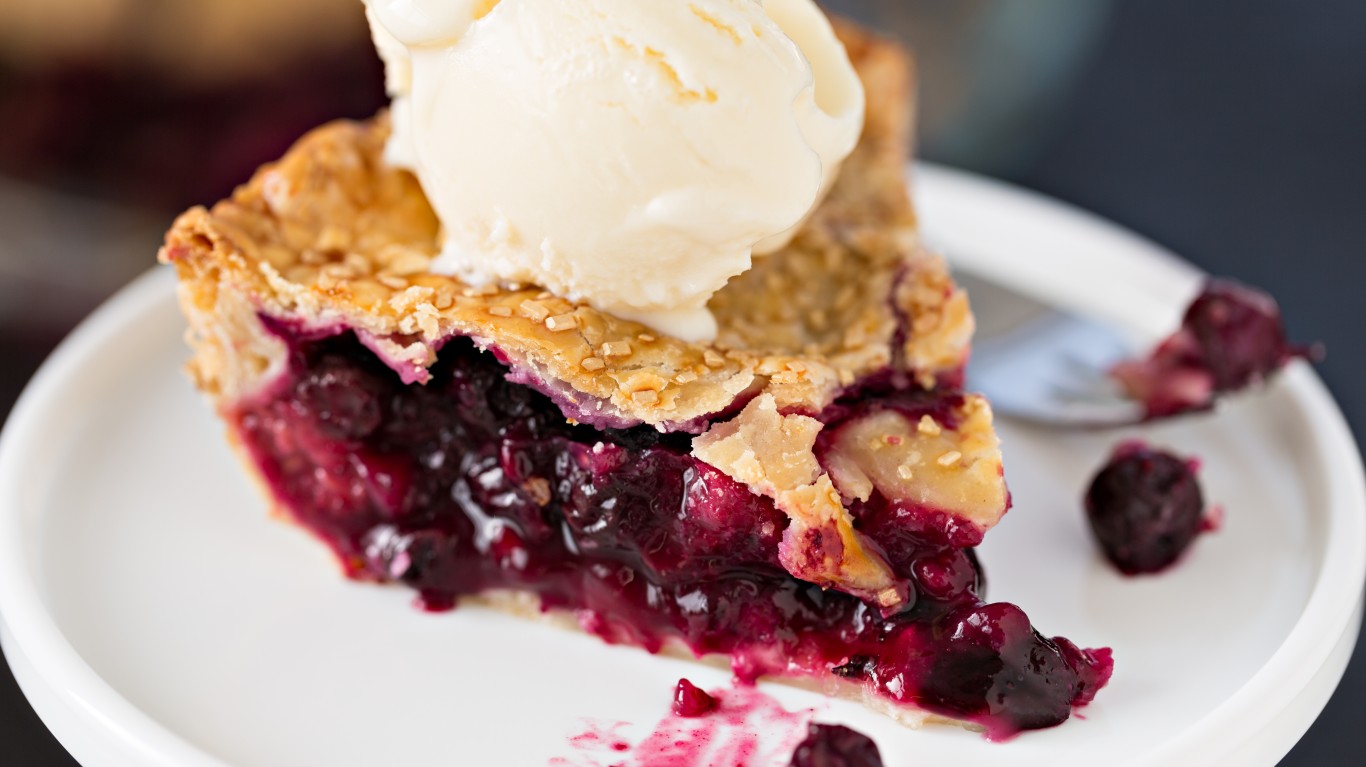
Pie and ice cream.
According to culinary legend, pie with ice cream, also called pie à la mode (literally “fashionable pie”), was invented at the Cambridge Hotel in the upstate New York town of Cambridge in the 1890s — though other sources attribute it to a restaurant in Duluth, Minnesota, about a decade earlier. Wherever it came from, it was a brilliant inspiration. (A distantly related combination is apple pie with cheddar cheese, which dates its origins back to England in the 1700s, and is today eaten mostly in the Midwest.)
Bread and butter

Buttered bread.
Because bread is basically dry, it has long been given moisture by dipping it in broth or soup, anointing it with olive oil (especially in the Mediterranean countries), or, in America, slathering it with butter or (much less satisfying) some butter substitute.
Salt and pepper
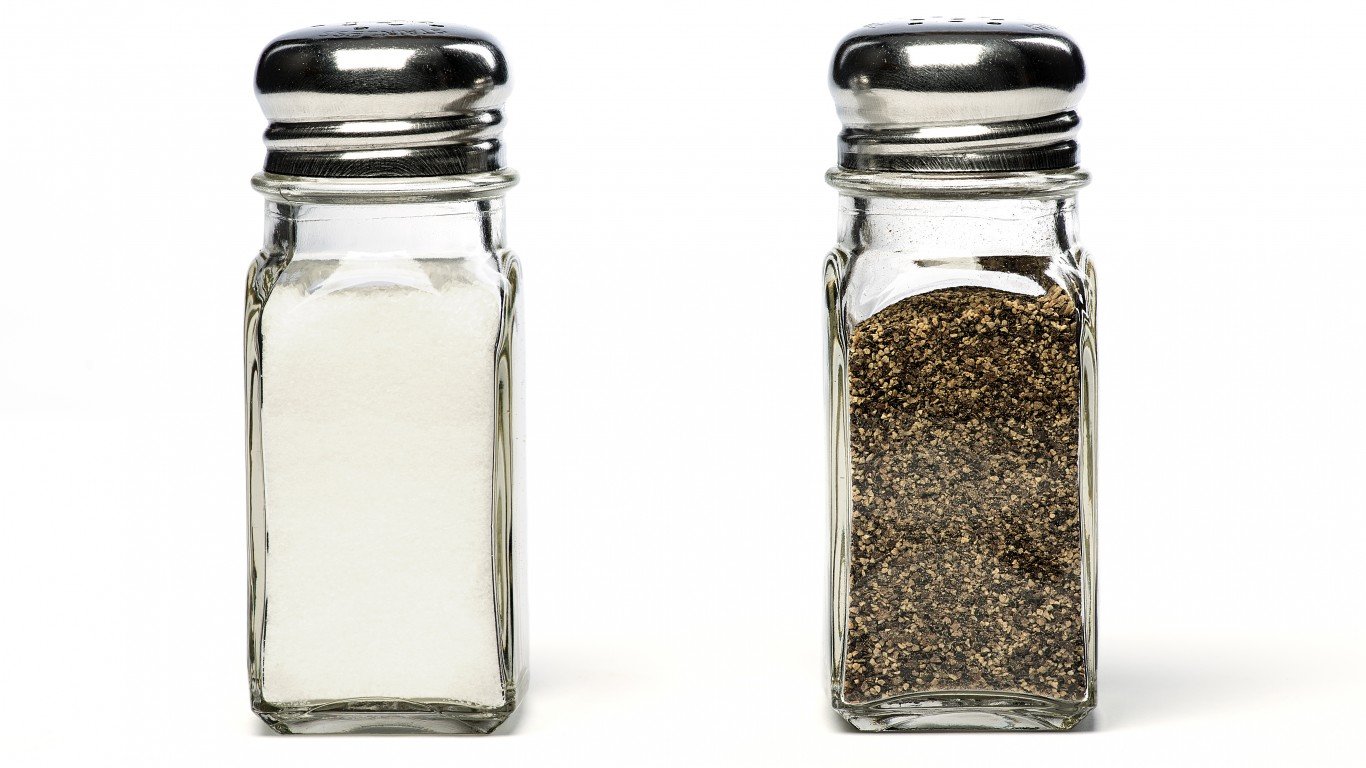
Salt and pepper.
Salt, whether drawn from evaporated sea water or dug from mines, has been an essential seasoning and food preservative since ancient times. Pepper is a much more recent addition to the larder, grown around the world in the tropics and formerly an expensive condiment. Its linking with salt on our tables seems to have been inspired by French chefs back in the 1600s, who found it milder in flavor than mixtures of dried herbs. While other condiments may be found on some tables (paprika, chile powder, MSG, etc.) the combination of salt and pepper rules.
